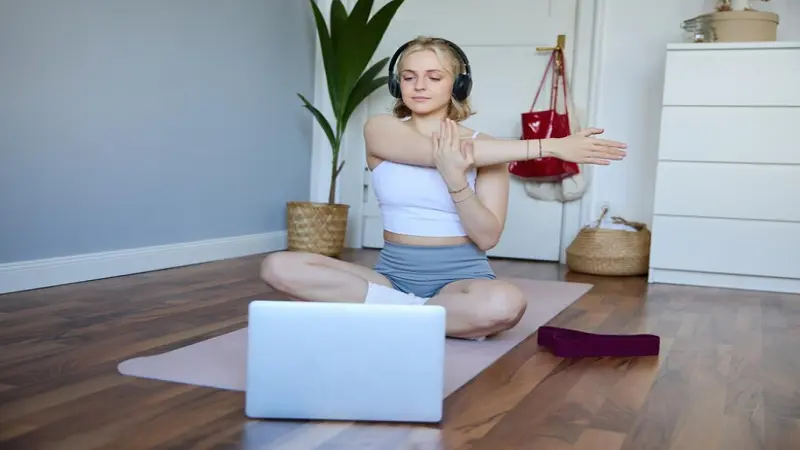This article explores the power of visualization in meditation, how it enhances your practice, and how you can incorporate it into your routine—specifically within the context of practices like SmartFitYoga, a holistic approach to yoga and meditation that integrates mind, body, and spirit for overall well-being.
What is Visualization?
Visualization is the practice of using your mind’s eye to create vivid, intentional images or scenarios. This process involves imagining desired outcomes, visualizing a specific object, or mentally rehearsing an action to achieve a particular goal. In meditation, The Power Of Visualization: Enhancing Your Meditation Practice Smartfityoga goes beyond mere imagination; it becomes a conscious tool for channeling mental energy, fostering clarity, and aligning with your deepest intentions.
The core idea behind visualization is simple: our thoughts and mental imagery can directly impact our emotions, mindset, and even our physical state. By creating mental images of calm, peace, and positive change, you train your mind to relax and shift your energy toward the desired state.
The Science Behind Visualization and Meditation
The effectiveness of visualization is not just based on anecdotal evidence—it has been supported by numerous studies in psychology and neuroscience. Research shows that the brain cannot always distinguish between what is real and what is vividly imagined. This concept is known as “mental imagery,” and it plays a crucial role in how we process and react to experiences.
When you visualize during meditation, your brain activates neural pathways similar to those that are activated when you physically perform an action or experience an event. For example, imagining yourself breathing deeply or picturing yourself in a peaceful natural setting can help trigger the relaxation response, reduce stress, and improve your mental well-being.
Furthermore, the practice of visualization taps into the concept of neuroplasticity the brain’s ability to reorganize itself by forming new neural connections. By consistently practicing visualization in meditation, you can train your brain to adopt new patterns of thought and behavior, which ultimately leads to improved emotional regulation, reduced anxiety, and a greater sense of self-awareness.
How Visualization Enhances Your Meditation Practice
Visualization can enhance your meditation practice in several meaningful ways. It serves as a powerful tool for cultivating mindfulness, guiding the mind to focus on a specific image or intention, which helps quiet the mental chatter that can often derail meditation. Whether you’re using visualization for relaxation, stress reduction, or spiritual growth, the practice can deepen your experience of meditation and offer profound benefits.
1. Deepens Focus and Concentration
Meditation can sometimes be difficult for beginners, as the mind tends to wander or get distracted. Visualization provides a clear focal point for the mind, making staying engaged in the practice easier. By focusing on a specific image, such as a flame, a beautiful landscape, or even an abstract color, you give the mind something concrete to hold onto. This enhances concentration, preventing the wandering thoughts that can disrupt the meditation flow.
For example, in SmartFitYoga, a practice that integrates physical movement and mental discipline, visualization can be used to enhance concentration during asanas (yoga postures). You might visualize energy flowing through your body as you move through a sequence of poses, which can deepen your awareness of your breath, body, and internal sensations.
2. Promotes Relaxation and Reduces Stress
One of the most common reasons people turn to meditation is to alleviate stress and anxiety. Visualization can be incredibly effective in this regard. By picturing a peaceful scene—whether it’s a calm beach, a quiet forest, or a serene mountaintop—you can create a mental environment that triggers the relaxation response in your body. As you breathe deeply and continue to visualize this peaceful space, your heart rate slows, your muscles relax, and a sense of calm washes over you.
Visualization can also be used to visualize the release of tension or negative energy. For instance, you might imagine stressing as a dark cloud or heavyweight, and through your breath and mental imagery, you can release that tension, allowing yourself to feel lighter and more at ease.
3. Enhances Emotional Healing
Visualization is a powerful tool for emotional healing and personal growth. In meditation, you can use visualization to connect with your emotions, process past trauma, or envision a future where you are living your best life. This practice allows you to create a mental image of emotional freedom, self-love, or inner peace, helping to shift your mindset and heal from emotional wounds.
In SmartFitYoga, The Power Of Visualization: Enhancing Your Meditation Practice Smartfityoga can be particularly effective in cultivating a deeper sense of self-compassion and emotional resilience. By visualizing yourself surrounded by love and support, you can begin to internalize these feelings and foster a more positive emotional state. This creates a ripple effect, improving your self-esteem and relationships with others.
4. Facilitates Goal Setting and Manifestation
Visualization is a widely used technique for goal setting, manifestation, and achieving personal desires. In meditation, you can use visualization to clearly define your goals, whether they relate to career, relationships, health, or personal growth. The idea is to imagine yourself already living the life you desire, vividly experiencing the emotions, actions, and success associated with that vision.
By repeatedly visualizing your goals, you align your energy and mindset with your intentions, creating a sense of clarity and purpose. For example, if you are working on improving your physical health, you might visualize yourself feeling strong, energetic, and confident. This helps to instill a sense of belief in your ability to achieve those outcomes.
5. Strengthens the Mind-Body Connection
In meditation and yoga, the mind-body connection is essential for cultivating balance and well-being. Visualization can deepen this connection by enabling you to picture energy flowing through your body, activating specific areas of physical and mental focus. For example, you might visualize your breath as light or energy moving through each chakra, harmonizing the body’s energy centers.
In SmartFitYoga, visualization can be paired with yoga postures to help align the body and mind. Whether you’re focusing on a specific movement or seeking to energize the body, visualizing the flow of energy throughout your body can enhance the physical and mental benefits of the practice. This integration of mental imagery with physical movement promotes a holistic sense of health.
How to Incorporate Visualization into Your Meditation Practice
Incorporating visualization into your meditation routine is simple and can be adapted to suit your individual needs and goals. Below are some steps you can follow to get started:
Step 1: Set Your Intention
Before beginning your meditation, take a moment to set your intention. Ask yourself what you want to achieve with this session. Is it relaxation? Emotional healing? Increased focus? When you have a clear intention, you’re The Power Of Visualization: Enhancing Your Meditation Practice Smartfityoga becomes more purposeful and directed.
Step 2: Find a Quiet Space
Choose a quiet, comfortable space where you won’t be disturbed. Sit in a comfortable position, either on a cushion, chair, or yoga mat. You may want to close your eyes to eliminate external distractions.
Step 3: Focus on Your Breath
Begin by taking a few deep breaths, allowing your body to relax. Focus on the sensation of your breath entering and leaving your body. This will help center your mind and prepare it for the visualization practice.
Step 4: Visualize Your Chosen Image
Once you feel calm and centered, begin to visualize an image or scenario that aligns with your intention. You could imagine yourself in a peaceful place, visualize a goal you want to achieve or picture the energy flowing through your body during a yoga practice. Engage all of your senses—see the colors, hear the sounds, feel the sensations of your visualized scene.
Step 5: Immerse Yourself in the Experience
As you continue to meditate, fully immerse yourself in the experience of your visualization. Let go of any resistance and allow your mind to naturally deepen into the image. If your mind starts to wander, gently guide it back to your visualization without judgment.
Step 6: End with Gratitude
After spending time with your visualization, take a moment to express gratitude for the experience. You may also wish to sit in stillness for a few moments, reflecting on any insights or feelings that arose during the meditation.
Conclusion
Visualization is a powerful tool that can significantly enhance your meditation practice. By engaging the mind’s creative potential, you can deepen your focus, promote relaxation, heal emotionally, and manifest your goals. Whether you are practicing traditional meditation or SmartFitYoga, incorporating visualization into your routine can unlock new levels of mindfulness, mental clarity, and personal growth.
As you begin to explore the power of The Power Of Visualization: Enhancing Your Meditation Practice Smartfityoga in your practice, remember that the mind is a tool that can shape your reality. By training it with intentional, positive imagery, you are paving the way for greater well-being, peace, and success in all areas of your life. Through meditation, visualization, and mindfulness, you can tap into your full potential and embrace the transformative power of the mind-body connection.




